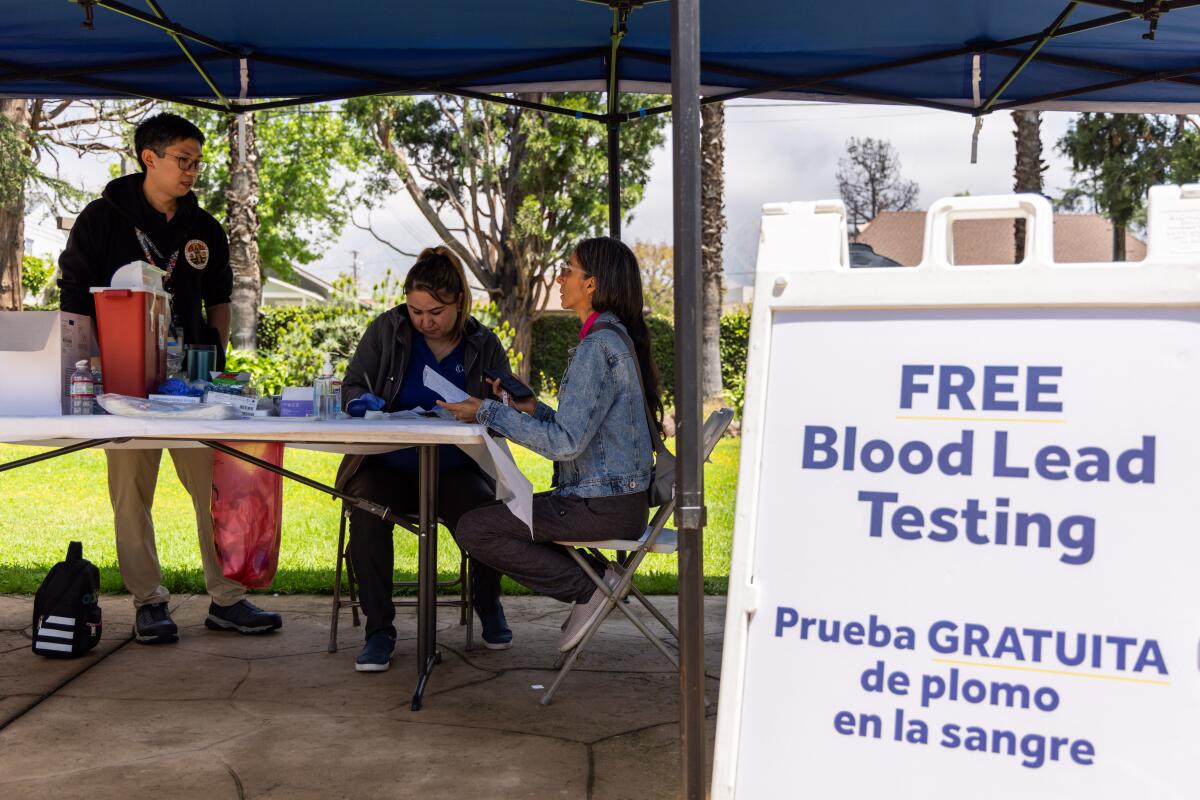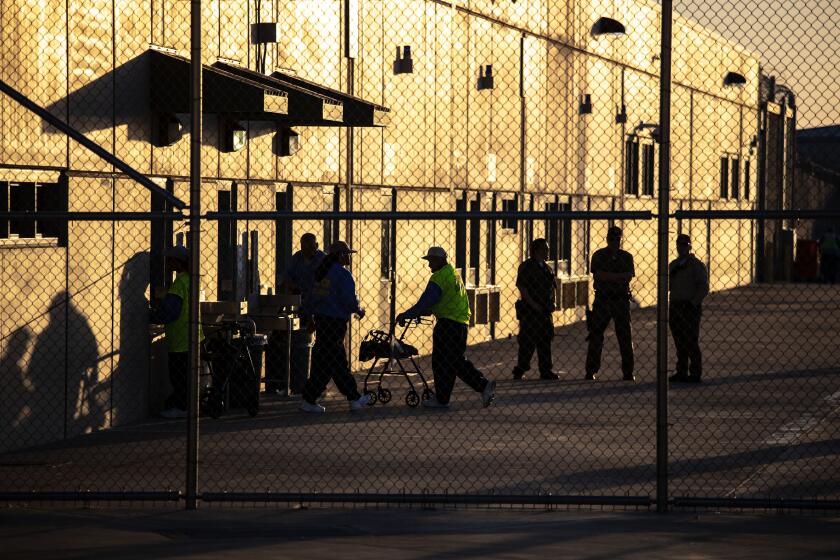Last chance for L.A. firestorm victims to have their blood lead levels tested for free

- Share via
The L.A. County Department of Public Health is offering its final free community blood testing event Friday to screen victims of January’s firestorms for possible exposure to lead, a dangerous neurotoxin commonly found in wildfire ash and debris.
Although elevated lead levels have been found in the soil of the Eaton and Palisades fire burn scars, community testing thus far has shown very low levels of lead contamination in residents.
Friday’s event will run from 9 a.m. to 4 p.m. at the Altadena Community Center, 730 E. Altadena Drive. Residents affected by the wildfires will continue to be eligible to receive free blood lead tests at a Quest Diagnostics lab through the end of the year by calling (800) 524-5323.
Of the more than 1,500 people who have been screened at previous community events, only seven have had test results above the federal Centers for Disease Control and Prevention’s blood-lead reference value of 3.5 micrograms per deciliter — indicating that the majority of those tested do not have elevated lead levels, according to the county’s public health department.
The Times tested for lead, mercury and other heavy metals in Altadena and Pacific Palisades. From respiratory problems to lung cancer, these are the risks of exposure.
Nevertheless, the department continues to encourage wildfire survivors to take advantage of this free opportunity as lead exposure is a well-documented health hazard.
Children are particularly vulnerable to lead poisoning because of their developing nervous systems and tendency to play close to the ground. Poisoning can lead to developmental delays, learning difficulties and other serious medical conditions such as kidney damage and heart disease. Pregnant women who are exposed to lead face a higher risk of premature delivery, stillbirth, miscarriage and having babies with low birth weight.
The concern over lead exposure stems from a growing body of research showing that fires — especially those that sweep through urban areas and burn plastic, electronics and synthetic materials — release a significant amount of toxic metals into the environment that can linger long after flames are extinguished.
The federal government decided not to test the soil of L.A.’s burn areas for hazardous substances. A Times investigation found high levels of lead and other heavy metals.
Testing commissioned by the county earlier this year found that 36% of soil samples collected in the Eaton burn scar had levels above the state health standard of 80 milligrams of lead per kilogram of soil. In the area southwest of the Eaton fire zone, between 70% and 80% exceeded the lead levels. There was no evidence of widespread lead contamination in the Pacific Palisades burn zone; however, officials reported isolated “hot spots” of heavy metals such as arsenic.
The Times conducted its own sampling across 40 properties in Altadena and Pacific Palisades, which found that two of 10 remediated Eaton-area sites still showed lead levels more than three times the standard.
Los Angeles County has allocated $3 million from previous lead-paint settlement funds to facilitate soil testing for homeowners within one mile downwind of the Eaton scar. The program is free for residents, who can check their eligibility and review detailed instructions for soil collection on the department’s soil-testing program website.
More to Read
Sign up for Essential California
The most important California stories and recommendations in your inbox every morning.
You may occasionally receive promotional content from the Los Angeles Times.
















